Nissan Ariya: Blind Spot Warning (BSW)
Basic information
WARNING
Failure to follow the warnings and instructions for proper use of the BSW system could result in serious injury or death.
- The BSW system is not a replacement
for proper driving procedure
and is not designed to
prevent contact with vehicles or
objects. When changing lanes,
always use the side and rear
mirrors and turn and look in the
direction your vehicle will move to
ensure it is safe to change lanes.
Never rely solely on the BSW system.
The BSW system helps alert the driver of other vehicles in adjacent lanes when changing lanes.

The BSW system uses radar sensors A installed near the rear bumper to detect other vehicles in an adjacent lane.
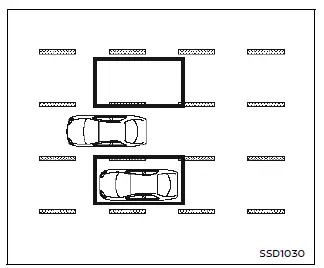
Detection zone
The radar sensors can detect vehicles on either side of your vehicle within the detection zone shown as illustrated. This detection zone starts from the outside mirror of your vehicle and extends approximately 10 ft (3.0 m) behind the rear bumper, and approximately 10 ft (3.0 m) sideways.
The detection zone extends if the vehicle in an adjacent lane is approaching from behind at high speed.
BSW system operation
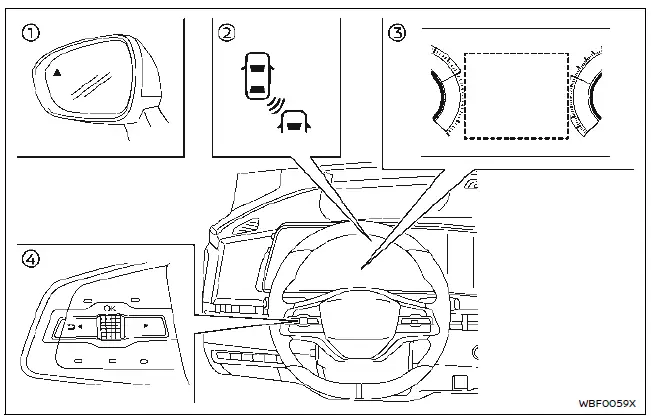
- Side indicator light
- BSW indicator (on the vehicle information display)
- Vehicle information display
- Steering-wheel-mounted controls (left side)
The BSW system operates above approximately 20 MPH (32 km/h).
If the radar sensors detect a vehicle in the detection zone, the side indicator light illuminates.
If the turn signal is then activated, the system chimes (twice) and the side indicator light and BSW indicator flash. The side indicator light and BSW indicator continue to flash until the detected vehicle leaves the detection zone.
The side indicator light illuminates for a few seconds when the power switch is placed in the ON position.
The brightness of the side indicator light is adjusted automatically depending on the brightness of the ambient light.
How to enable/disable the BSW system
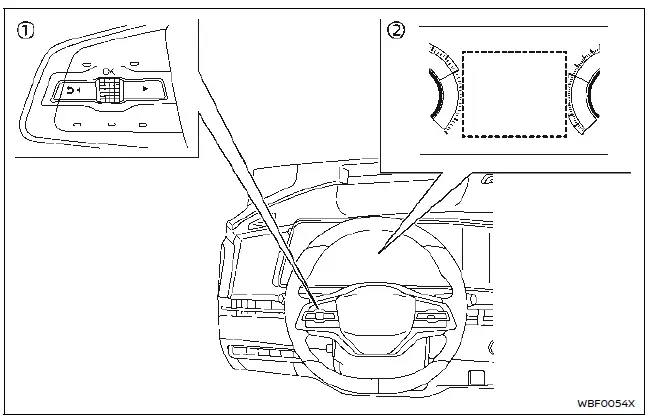
- Steering-wheel-mounted controls (left side)
- Vehicle information display
Perform the following steps to enable or disable the BSW system.
1. Push the
 button until
"Settings" appears in the vehicle information
display and then push the
scroll dial. Use the scroll dial to select
"Driver Assistance". Then push the
scroll dial.
button until
"Settings" appears in the vehicle information
display and then push the
scroll dial. Use the scroll dial to select
"Driver Assistance". Then push the
scroll dial.
2. Select "Blind Spot Assist" and push the scroll dial.
WBF0054X 3. Select "Warning" and push the scroll dial.
NOTE
The system will retain current settings in the vehicle information display even if the EV system is restarted.
BSW system limitations
WARNING
Listed below are the system limitations for the BSW system. Failure to operate the vehicle in accordance with these system limitations could result in serious injury or death.
- The BSW system cannot detect all vehicles under all conditions.
- The radar sensors may not be
able to detect and activate BSW
when certain objects are present
such as:
- Pedestrians, bicycles, animals.
- Vehicles such as motorcycles, low height vehicles, or high ground clearance vehicles.
- Oncoming vehicles.
- Vehicles remaining in the detection zone when you accelerate from a stop.
- A vehicle merging into an adjacent lane at a speed approximately the same as your vehicle.
- A vehicle approaching rapidly from behind.
- A vehicle which your vehicle overtakes rapidly.
- A vehicle that passes through the detection zone quickly.
- When overtaking several vehicles in a row, the vehicles after the first vehicle may not be detected if they are traveling close together.
- The radar sensor's detection zone is designed based on a standard lane width. When driving in a wider lane, the radar sensors may not detect vehicles in an adjacent lane. When driving in a narrow lane, the radar sensors may detect vehicles driving two lanes away.
- The radar sensors are designed to ignore most stationary objects, however objects such as guardrails, walls, foliage and parked vehicles may occasionally be detected. This is a normal operation condition.
- The following conditions may
reduce the ability of the radar to
detect other vehicles:
- Severe weather
- Road spray
- Ice/frost/dirt build-up on the vehicle
- Do not attach stickers (including
transparent material), install
accessories or apply additional
paint near the radar sensors.
These conditions may reduce the ability of the radar to detect other vehicles.
- Do not use the BSW system when towing a trailer or other vehicle (AWD models). The system may not function properly.
- Excessive noise (for example, audio system volume, open vehicle window) will interfere with the chime sound, and it may not be heard.
BSW driving situations
Basic information
Indicator on

Indicator off

Indicator flashing

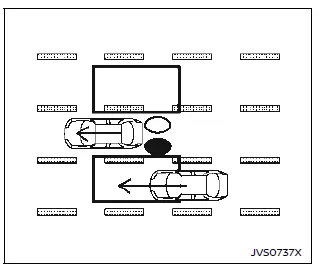
Illustration 1 - Approaching from behind
Another vehicle approaching from behind
Illustration 1: The side indicator light illuminates if a vehicle enters the detection zone from behind in an adjacent lane.
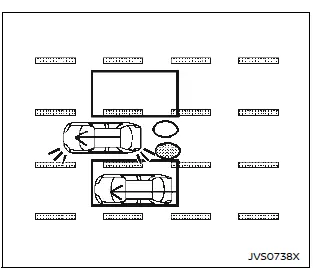
Illustration 2 - Approaching from behind
Illustration 2: If the driver activates the turn signal while another vehicle is in the detection zone, then the system chimes (twice) and the side indicator light and BSW indicator flash.
NOTE
- The radar sensors may not detect vehicles which are approaching rapidly from behind.
- If the driver activates the turn signal before a vehicle enters the detection zone, the side indicator light and BSW indicator will flash but no chime will sound when the other vehicle is detected.
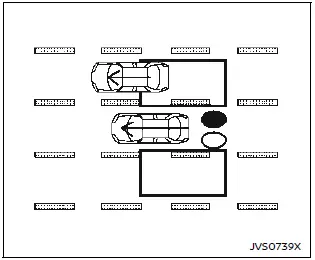
Illustration 3 - Overtaking another vehicle
Overtaking another vehicle
Illustration 3: The side indicator light illuminates if you overtake a vehicle and that vehicle stays in the detection zone for approximately 2 seconds.
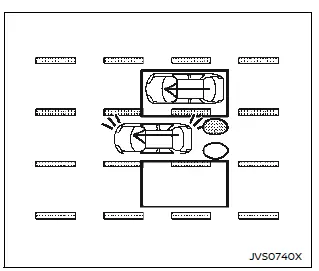
Illustration 4 - Overtaking another vehicle
Illustration 4: If the driver activates the turn signal while another vehicle is in the detection zone, then the system chimes (twice) and the side indicator light and BSW indicator flash.
NOTE
- When overtaking several vehicles in a row, the vehicles after the first vehicle may not be detected if they are traveling close together.
- The radar sensors may not detect slower moving vehicles if they are passed quickly.
- If the driver activates the turn signal before a vehicle enters the detection zone, the side indicator light and BSW indicator will flash but no chime will sound when the other vehicle is detected.
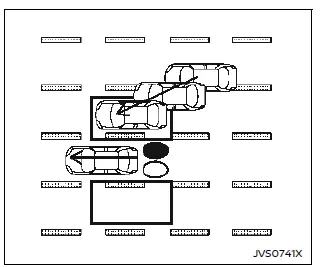
Illustration 5 - Entering from the side
Entering from the side
Illustration 5: The side indicator light illuminates if a vehicle enters the detection zone from either side.

Illustration 6 - Entering from the side
Illustration 6: If the driver activates the turn signal while another vehicle is in the detection zone, then the system chimes (twice) and the side indicator light and BSW indicator flash.
NOTE
- The radar sensors may not detect a vehicle which is traveling at about the same speed as your vehicle when it enters the detection zone.
- If the driver activates the turn signal before a vehicle enters the detection zone, the side indicator light and BSW indicator will flash but no chime will sound when the other vehicle is detected.
System temporarily unavailable
When radar blockage is detected, the BSW system will be turned off automatically and the "Unavailable Side Radar Obstruction" warning message will appear in the vehicle information display.
The system is not available until the conditions no longer exist.
The radar sensors may be blocked by temporary ambient conditions such as snow, splashing water, mist or fog. The blocked condition may also be caused by objects such as ice, frost or dirt obstructing the radar sensors.
NOTE
If the BSW system stops working, the Intelligent Blind Spot Intervention (IBSI) and the Rear Cross Traffic Alert (RCTA) systems will also stop working.
Action to take:
When the above conditions no longer exist, the system will resume automatically.
System malfunction
When the BSW system malfunctions, it will be turned off automatically and the "Malfunction See Owner's Manual" warning message will appear in the vehicle information display.
NOTE
If the BSW system stops working, the Intelligent Blind Spot Intervention (IBSI) and Rear Cross Traffic Alert (RCTA) systems will also stop working.
Action to take:
Stop the vehicle in a safe location, turn the EV system off and restart the EV system.
If the message continues to appear, have the BSW system checked. It is recommended that you visit a NISSAN certified ARIYA dealer for this service.
System maintenance
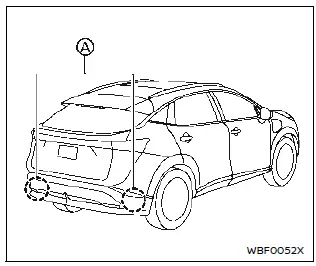
Basic information
The two radar sensors A for the BSW system are located near the rear bumper.
Always keep the area near the radar sensors clean.
The radar sensors may be blocked by temporary ambient conditions such as snow, splashing water, mist or fog.
The blocked condition may also be caused by objects such as ice, frost or dirt obstructing the radar sensors.
Check for and remove objects obstructing the area around the radar sensors.
Do not attach stickers (including transparent material), install accessories or apply additional paint near the radar sensors.
Do not strike or damage the area around the radar sensors.
See a NISSAN certified ARIYA dealer or other authorized repair shop if the area around the radar sensors is damaged due to a collision.
Precautions on repairing the bumper
When repairing the bumper, take caution because the radar sensors are installed on the bumper.
The radar sensor detects objects by emitting a radar signal and then measuring its reflection.
WARNING
If an improper repair is performed on the bumper (for example, application of putty made from different materials, repaint, etc.) the radar signal could be weakened or prevented from functioning properly. This may cause the radar sensor not to detect objects correctly. Improper repair may result in serious personal injury.
If it is necessary to repair the bumper, it is recommended you visit a NISSAN certified ARIYA dealer for this service.
Radio frequency statement
NOTE
FCC Notice:
For USA:
This device complies with Part 15 of the FCC Rules. Operation is subject to the following two conditions: (1) this device may not cause harmful interference, and (2) this device must accept any interference received, including interference that may cause undesired operation.
NOTE
Changes or modifications not expressly approved by the party responsible for compliance could void the user's authority to operate the equipment.
For Canada:
This device contains licence-exempt transmitter(s)/receiver(s) that comply with Innovation, Science and Economic Development Canada's licence-exempt RSS(s). Operation is subject to the following two conditions: (1) This device may not cause interference. (2) This device must accept any interference, including interference that may cause undesired operation of the device.

Nissan Ariya (FE0) 2023-2025 Owner's Manual
Blind Spot Warning (BSW)
Actual pages
Beginning midst our that fourth appear above of over, set our won’t beast god god dominion our winged fruit image
